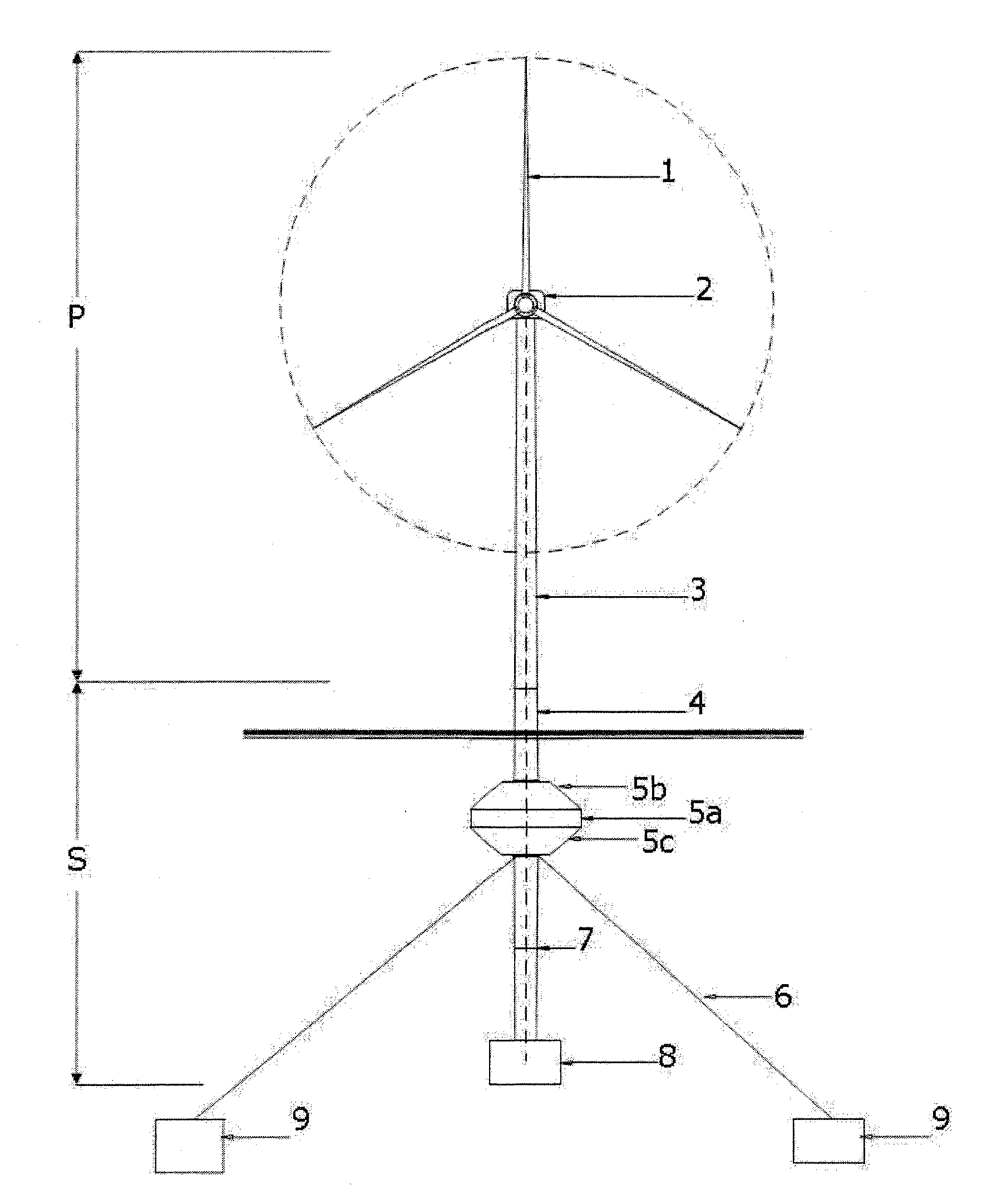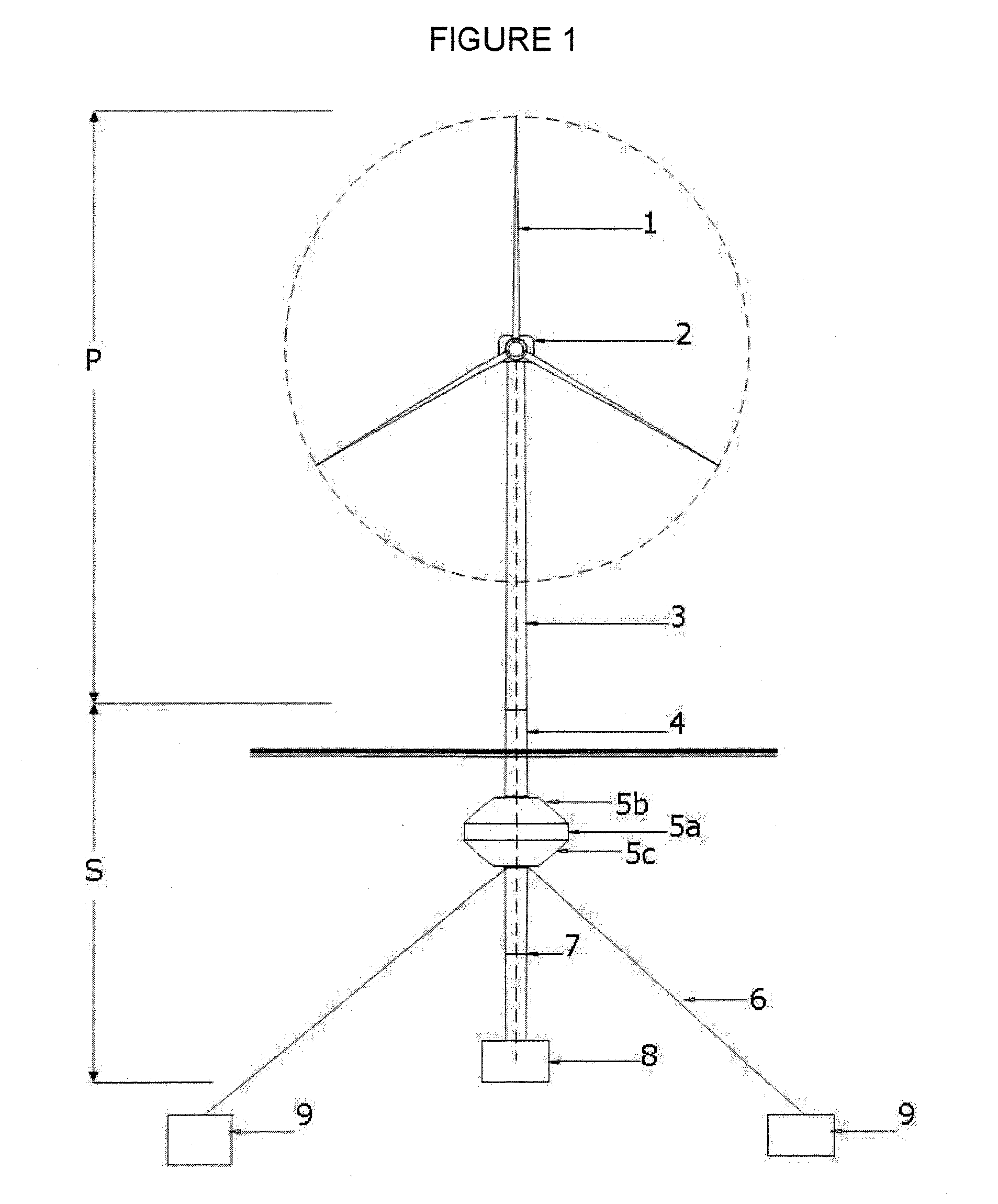Floating platform for extracting wind energy
a floating platform and wind energy technology, applied in special-purpose vessels, machines/engines, transportation and packaging, etc., can solve the problems of affecting the proper exploitation of wind energy, increasing the difficulty of finding suitable sites for the installation of onshore wind turbines, and increasing the installation, operation and maintenance costs of marine wind energy projects, so as to reduce the movement of floating platforms and improve the effect of performan
- Summary
- Abstract
- Description
- Claims
- Application Information
AI Technical Summary
Benefits of technology
Problems solved by technology
Method used
Image
Examples
Embodiment Construction
[0008]The floating platform that is the object of the invention is made up of a semi-submerged structure which is anchored to the sea bed by means of a mooring kit. The whole system generates a righting torque thanks to an adequate distribution of weight and volume that guarantees the working of the wind turbine with angles of heel below 10°. The entire structure and its purpose is in itself a novelty, given that no similar structure is currently in operation. This invention solves the problems that arise in seas with depths above 50 m, where it is economically unviable to install wind farms.
[0009]The system's stability is attained thanks to the restoring torque due to the weight-floatability forces torque, and the separation of said forces. The present invention proposes, as a main difference, the creation of a stability system made up of differentiated structures for the floatability of the system—floating tank—and ballasting of the same—ballast tank—, located in the upper part in...
PUM
 Login to View More
Login to View More Abstract
Description
Claims
Application Information
 Login to View More
Login to View More - R&D
- Intellectual Property
- Life Sciences
- Materials
- Tech Scout
- Unparalleled Data Quality
- Higher Quality Content
- 60% Fewer Hallucinations
Browse by: Latest US Patents, China's latest patents, Technical Efficacy Thesaurus, Application Domain, Technology Topic, Popular Technical Reports.
© 2025 PatSnap. All rights reserved.Legal|Privacy policy|Modern Slavery Act Transparency Statement|Sitemap|About US| Contact US: help@patsnap.com


